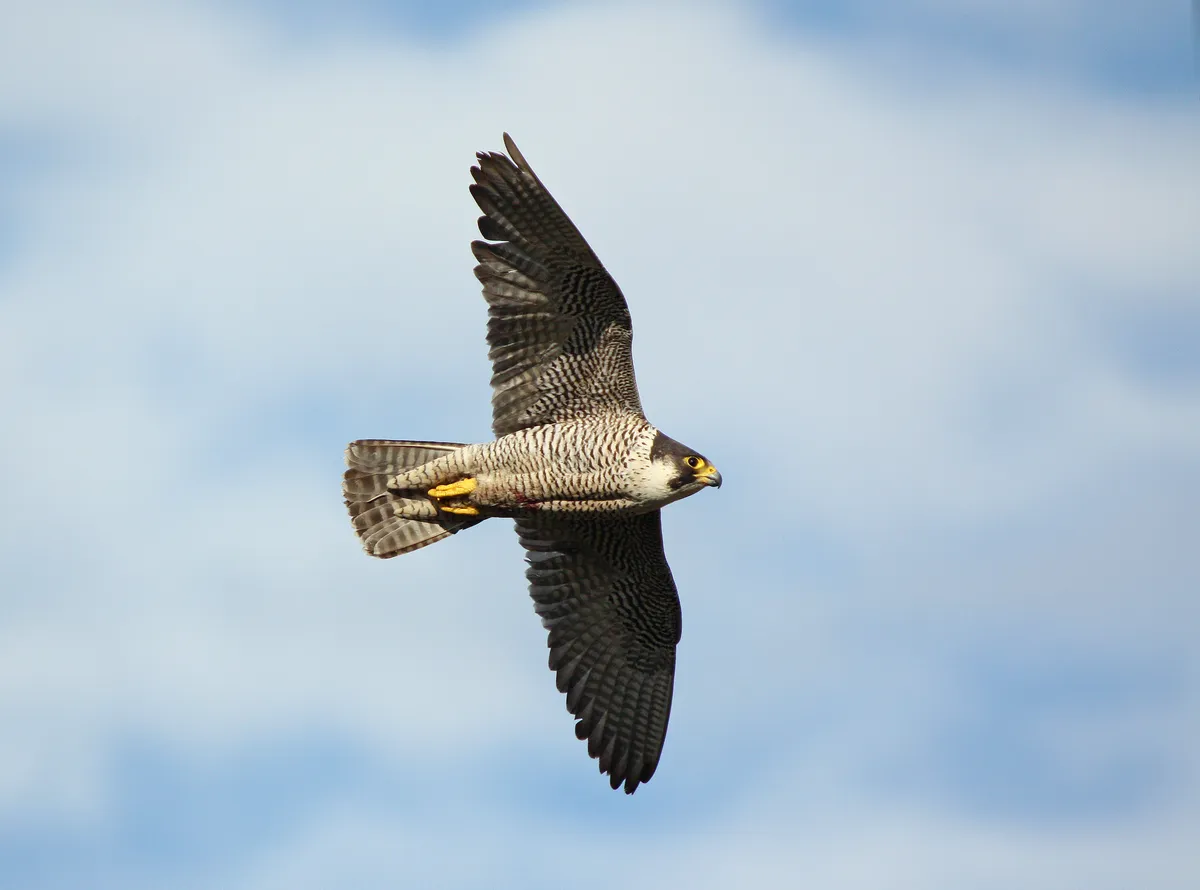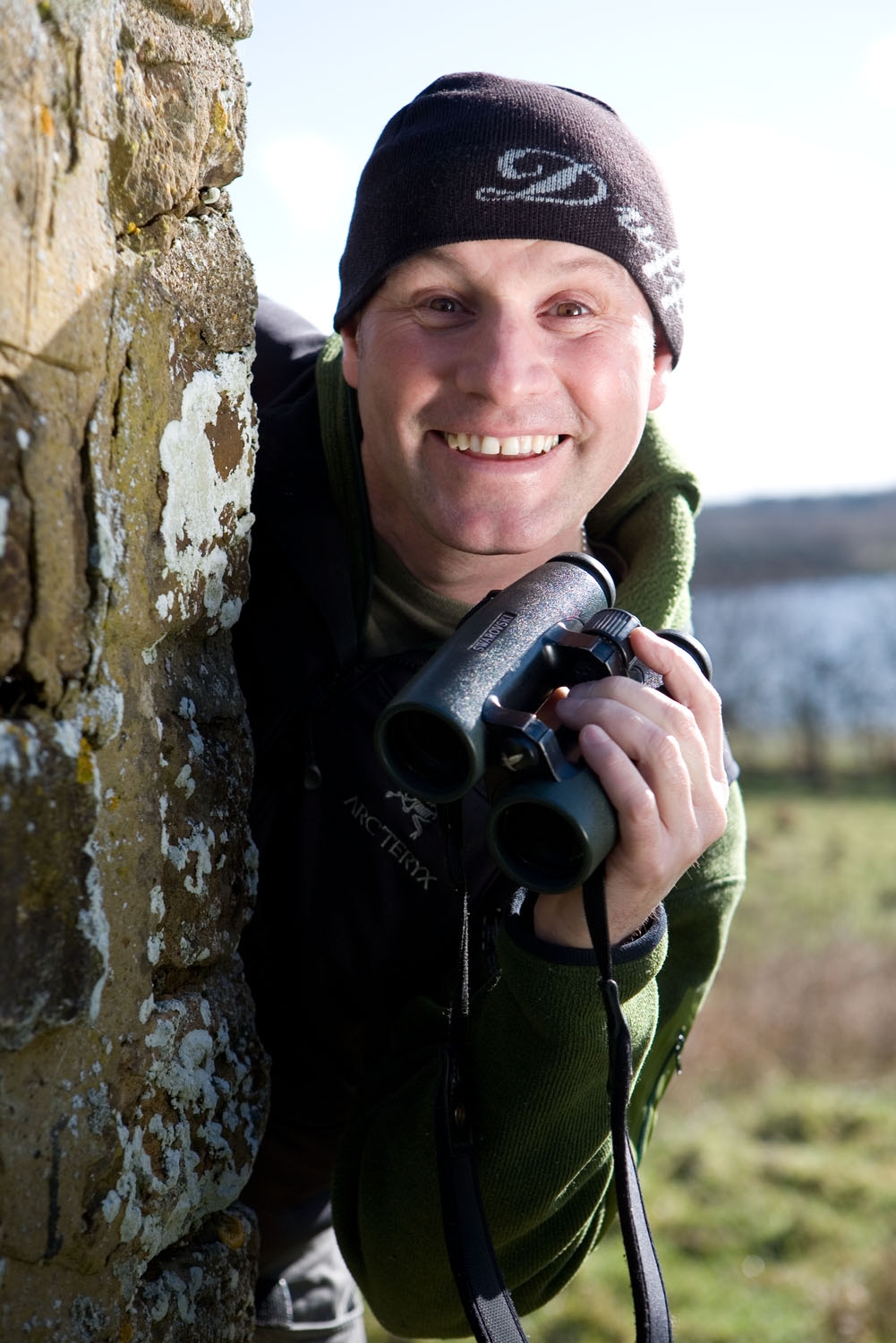Few, if any, birds are capable of commanding a fraction of the respect and awe bestowed upon Britain’s largest falcon, the peregrine falcon.
- Fierce, majestic and deadly: your ultimate guide to the world's biggest birds of prey
- This deadly raptor can spot prey over a mile away and swoop in at 100 miles an hour to make its kill
Recovering from a low in the 1960s, when only 385 pairs were recorded, the recent upturn in the peregrine’s fortunes to reach about 1,750 pairs is one glimmer of hope amongst a veritable tsunami of species declines recorded elsewhere.
With the parents busy feeding their young during early summer, find out how to enjoy some free, high-octane entertainment as they take to the skies in pursuit of airborne prey.
Where do peregrine falcons live?
Justifiably deserving its title of ‘fastest bird on Earth’, the peregrine falcon is also the world’s most cosmopolitan bird of prey. Comprising at least 17 different recorded subspecies, peregrines can be found breeding on every continent bar Antarctica.
In Britain, peregrines were traditionally confined to craggy locations or coastal areas, primarily in the north and west. However, having reinvented themselves as the ultimate urban predator, an increasing number of peregrines are now nesting in towns and cities, where power stations, pylons, high-rise tower blocks and cathedrals offer the perfect replicas of this species’ ancestral cliff-ledge home.

What do peregrines look like?
Like many birds of prey, the female or ‘falcon’ is about a third larger than the male or ‘tiercel’, but both sexes have the same blue-back upperparts and streaked underparts, while a black hood and ‘moustache’ contrast with their white cheeks and throat.
How big are peregrines?
Peregrines are about 39-50 cm in length, with a wingspan of 95-115 cm. On average they weigh between 600-1300 g
Learn more about birds of prey:
When is the best time to see peregrines?
Courtship flights and mating take place in March and clutches are laid a few weeks later before hatching after a month-long incubation. By early June the brood are well-feathered and have an insatiable appetite; parents need to put in long hunting shifts if they are to keep up with the incessant demands of their young family.
What do peregrines eat?
Peregrines feed almost exclusively on small to medium-sized birds. They will also frequently focus on what may be locally most abundant – such as golden plover and red grouse in the uplands, and seabirds on the coast, while feral pigeons and starlings make popular meals in urban areas.
However, studies of plucked feathers and grisly prey remains have revealed peregrines are also supremely opportunistic – an Arctic tern was recorded at a nest site in Derby, while corncrake was found to be on the menu for a pair breeding in Bath.

How do peregrine falcons hunt?
While peregrines have been observed catching their prey directly from its perch, or by flushing any concealed birds through repeated low flights over vegetation, the most commonly recorded hunting technique is the ‘stoop’.
The peregrine folds in its wings and tail, becoming the shape of a tear drop. Then it plummets downwards at an immense speed and a fairly steep angle, before employing its talons to strike its victim in mid-air. Often the target will be killed immediately on impact, but if it is still alive and kicking, it will be quickly dispatched using a special notch on the peregrine’s upper bill – the tomial tooth – that breaks the prey’s neck and spinal cord.
There seems little doubt that peregrines are capable of reaching 290kph, with research indicating their flight path is curved. This enables them to hold their head straight, thereby reducing aerodynamic drag, while also keeping their prey at the best angle for maximum visual acuity.
To avoid lung damage from the pressure changes that accompany diving at such high speeds, peregrines also possess specialised ‘tubercles’ in their nostrils. These small, bony protuberances reduce the speed that air enters their passageways and help manage the rapid changes in air pressure – allowing the bird to breathe more easily while diving.
A semi-transparent nictitating membrane also operates as an inner eyelid and is drawn over the eye to protect it from wind and dust at top speed, while still allowing the peregrine to ensure an accurate strike of their prey. So successful is this hunting technique that peregrine expert Ed Drewitt says up to a third or more hunts by a breeding pair will end in a successful kill.
Main image: A peregrine falcon with a dead partridge. © Alan Tunnicliffe Photography/Getty






